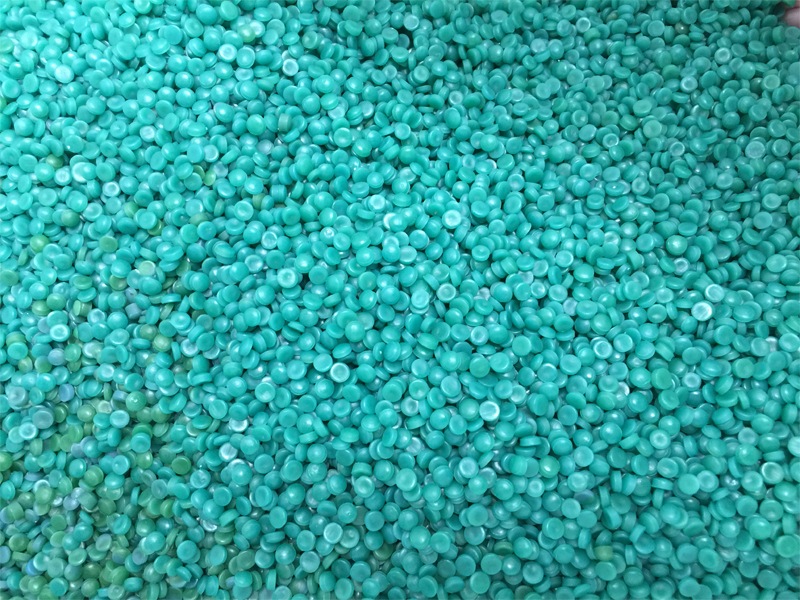1.Introduction to LDPE
Low-density polyethylene (LDPE), also known as high-pressure polyethylene, is a plastic material that is suitable for various molding processes of thermoplastic molding and has good molding processability.

2. Performance of LDPE
After LDPE is heated, as the temperature increases, the crystallization gradually decreases, the crystalline part disappears completely, and the polyethylene melts. The temperature at this time is the melting point. As the density of polyethylene increases, the melting point also increases as the crystallinity increases. Therefore, polyethylene with different densities has different melting points. The melting point of LLDPE is 120~125C, between HP-LDPE and HDPE.
The melting point of comonomer LLDPE changes with the increase or decrease of the carbon atoms of its comonomer. The melting point increases as the number of carbon atoms increases. Since LLDPE has a higher melting point than HP-LDPE, molded products can be demoulded at a higher temperature quickly and cleanly. LDPE film has high heat sealing strength. The fluidity of LDPE when the temperature increases and the changes when the load increases are mainly affected by the molecular weight.
Since it is easier to measure the melt flow rate of polyethylene than to measure the molecular weight, the molecular weight characteristics of polyethylene are usually expressed by the melt index (MI) or the melt flow index (MFI). In the molten state, the LDPE melt viscosity is a function of molecular weight, which increases as the molecular weight increases. For the same molecular weight, the melt viscosity decreases as the temperature increases. LDPE density has different toughness at normal temperature
Low-temperature LDPE naturally has good toughness and low embrittlement temperature, which is related to molecular weight. The molecular weight of LDPE increases and the temperature decreases, with a value of -140C. Under the same molecular weight, the melt viscosity of linear structure LLDPE and HDPE is greater than that of non-linear structure LDPE. When the melt index is the same, the melt viscosity of LDPE is significantly lower than that of LLDPE and HDPE. The melt fluidity of the former during processing is obviously better than that of the latter two. The screw load is small and the calorific value is also small.
3. Processing method
LDPE grades can meet the requirements of most thermoplastic molding processing technologies. Including: film blowing, film casting, extrusion gluing, wire and cable gluing, injection molding, and blow molding.
4.Main applications
The main uses of LDPE are film products, such as agricultural films, ground covering films, agricultural films, vegetable greenhouse films, etc.; packaging films such as candy, vegetables, frozen food, etc.; blown films for liquid packaging (milk, soy sauce, juice) , tofu, soy milk); heavy packaging bags, shrink packaging films, elastic films, lining films; construction films, general industrial packaging films and food bags, etc.
LDPE is also used in injection molded products, such as small containers, lids, daily products, plastic flowers, injection-stretch-blow molded containers, medical equipment, pharmaceutical and food packaging materials. Extruded pipes, plates, wire and cable coverings, special profiles, thermoforming and other products; blow molded hollow molding products, such as food containers including dairy products and jams, medicine, cosmetics, chemical product containers, tanks and other calcium plastic boards , foam plastics, etc. Rotational molding Rotomolded products are primarily used for large containers and storage tanks.
5. Advantages and disadvantages of LDPE
(1)Advantages
Low density polyethylene is the lightest variety among polyethylene resins. Compared with high-density polyethylene, its crystallinity (55%~65%) and softening point (90~100C) are lower; it has good flexibility, extensibility, transparency, cold resistance and processability; its chemical stability Better, resistant to acid, alkali and salt aqueous solutions; good electrical insulation and breathability; low water absorption; easy to burn. It is soft in nature and has good extensibility, electrical insulation, chemical stability, processing performance and low temperature resistance (can withstand -70C).
(2)Disadvantages
The disadvantage is that its mechanical strength, moisture barrier, gas barrier and solvent resistance are poor. The structure is not regular enough, the crystallinity (55%-65%) is low, and the crystallization melting point (108-126C) is also low. Its mechanical strength is lower than that of high-density polyethylene, and its anti-seepage coefficient, heat resistance and anti-sunlight aging resistance are poor. It is easy to age, decompose and discolor under sunlight or high temperature, resulting in a decrease in performance. Therefore, low-density polyethylene is added when making plastic rolls. Antioxidants and UV absorbers are added to improve its deficiencies.
6. Identification method:
Sensory identification: soft to the touch: white and transparent, but with average transparency.
Combustion identification: The upper part of the burning flame is yellow and the lower part is blue; it is smokeless when burning, has the smell of paraffin, melts and drips, and is easy to draw.